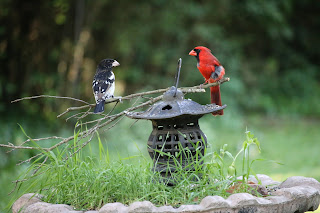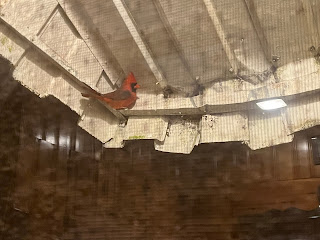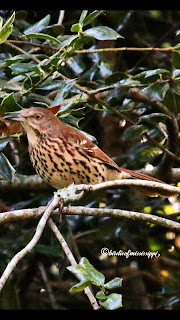WHY DO THEY LOOK SO FUNNY? - 6/10/20
WHY DO THEY LOOK SO FUNNY?
BY: PEGGY WILLIAMS AKA Birdie of Mississippi
During the spring when I take photos of birds, what I think that I am getting isn’t always what I get! Since many birds are laying eggs and new babies are hatching every day fledglings are appearing all over the place. This makes some birds hard to identify especially if you only get a quick look before they flutter away! The look of the bird can be totally different from the parent bird when they are first born and the wacky description that we type into a bird identifier app may come up with some fairly unique sounding birds!
If you have the luxury of seeing the nest and eggs before they hatch that would be a huge advantage to identifying the bird. But there are different sizes and shapes for nests and unless you are pretty familiar with these, even this information can prove to be a challenge to your bird identification checklist. Using Google, we can type in nest descriptions and the color, size and shape of eggs to help us quickly figure out what used to live in the nest. Bird apps made by Audubon and The Cornell Lab can be installed on your cell phone to rapidly identify the bird in question. These helpers place us a million steps ahead of the “Birdie” of yesteryear.
Once the nestling has flown out of the nest, birders have a better chance of seeing the young birds. As the nestling becomes a fledgling they look pretty sad in their appearance because they do not have the coloring or feathers that the adult bird has. Fledglings may have trouble taking flight and you might see them on the ground struggling because their feathers aren’t totally developed. Their feathers are often mixed with the downy covering of the nestling until full feather status is achieved. I have seen some little birds that I have thought were sick because they looked so goofy! Not only do they often have unusual feathers, but their features and proportions are awkward – with crazy looking beaks or legs too short or too long! Even the corners of their mouth can show how they used to have their mouth wide open to beg food from the momma bird. Even their actions can seem like “a baby.”
After reading Audubon and Birds & Blooms magazine articles I realize that I am not the only one who struggles with identifying during the spring. Professionals may also have difficulty when they have birds that are similar in appearance to each other. As a photographer I am always hesitant to share photos of juveniles because people only want to see pretty birds and juvenile birds are like gawky teenagers going through stages of their development that aren’t always that pretty and perfect looking.
This spring I have been excited to see more and more baby birds be born in my yard because I provide food, water and homes for their parents. As they have learned to fly they too have come to my feeders to eat and I have seen Red-bellied Woodpeckers that don’t have any red on them yet, Northern Cardinals with black downy feathers around their waist and Rose Breasted Grosbeaks that don’t have rose on their breasts! How exciting nature can be when we stop long enough to “Look at the birds of the air.” Matthew 6:26
My photos may be viewed & “LIKED” on Facebook, Instagram and Pinterest - “Birdie of Mississippi”.
E-mail: birdieofmississippi@gmail.com - Read my Blog @ http://www.birdieofmississippi.blogspot.com



Comments
Post a Comment